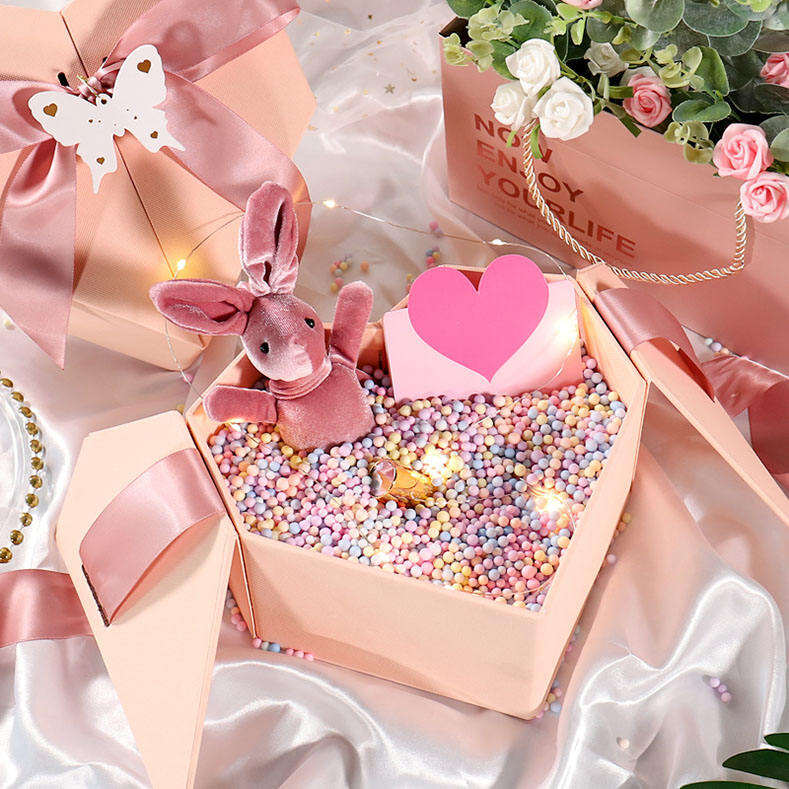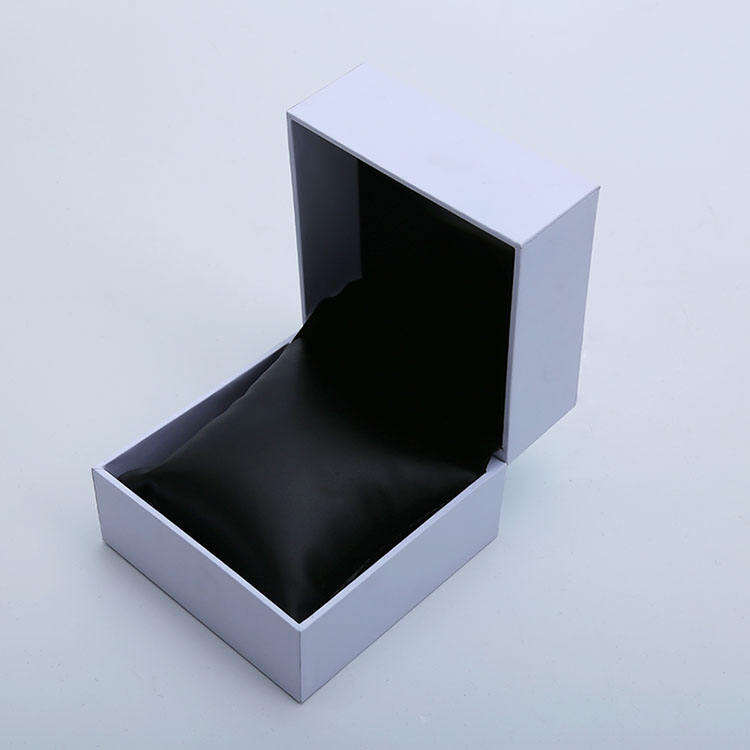The Craftsmanship of Gift Box Design: From Concept to Creation
Core Elements of Gift Box Design
Material Selection: Balancing Aesthetics and Durability
Choosing the right materials for gift box design is crucial as it ensures both aesthetically pleasing and structurally sound packaging. The materials should not only be eye-catching but also strong enough to protect the contents within. Common materials used include cardboard, paperboard, and various plastics. These materials are popular due to their balance of durability and visual appeal. Importantly, consumer preferences are shifting towards sustainability, with over 60% of consumers favoring eco-friendly options. Incorporating elements such as matte or glossy finishes can further enhance the texture and appearance of gift boxes, offering an additional layer of allure. By carefully selecting materials that strike a balance between appearance and functionality, brands can appeal to environmentally conscious consumers while maintaining product safety.
Functional Design: Incorporating Heart-Shaped Windows & Compartments
Functional design in gift boxes involves integrating innovative features that elevate the unboxing experience. One popular design element is the inclusion of heart-shaped windows, which adds a unique and romantic touch. These windows offer a glimpse of the contents inside, creating anticipation and excitement. Additionally, compartments within gift boxes help organize multiple items, providing a more structured and appealing presentation. Brands like Tiffany & Co. have successfully leveraged compartments in their packaging to transform the unboxing into a delightful experience. Such design elements not only enhance the presentation but also increase perceived value by playing on consumer psychology. By adding these thoughtful features, brands can enhance user experiences, making their gift boxes more memorable and desirable.
Brand Alignment: Customization for Memorable Unboxing Experiences
Customization in gift box design is essential for aligning with a brand's identity and creating memorable unboxing experiences. Tailored packaging that resonates with the brand's ethos can evoke emotions and foster a deeper connection with consumers. Research indicates that customized packaging can enhance brand loyalty by up to 30%. Take, for example, Apple, a company known for its sleek and minimalistic packaging approach that perfectly matches its brand philosophy. By using unique designs, businesses can – beyond protecting products and decorating gifts – effectively communicate brand values during unboxing. Emphasizing brand alignment through thoughtful packaging designs not only captivates consumers but also enhances engagement and ensures that the unboxing experience is an integral part of the product offering.
The Creative Process: From Sketch to Finished Product
Concept Development: Merging Client Vision with Structural Requirements
Concept development is a crucial stage where client visions are translated into tangible designs. This process often begins with brainstorming sessions to align the designer’s creativity with the client’s expectations and target audience needs. Understanding these goals is fundamental, as it ensures that both aesthetic and functional aspects meet the brief's requirements. According to industry experts, such as Jessica Deseo, an experienced packaging designer, successful concept development hinges on balancing innovative ideas with industry standards to maintain structural integrity. This approach helps create packaging that not only looks appealing but also effectively protects the contents.
Prototyping Techniques: Food Packaging Machinery Adaptations
Prototyping in gift box design involves a blend of traditional and modern techniques. Utilizing techniques like 3D printing and CAD modeling facilitates the creation of detailed prototypes that closely resemble the final product. Moreover, adapting food packaging machinery creatively can streamline the production process, ensuring efficiency and cost-effectiveness. This adaptability means that designers can use existing machinery to create complex designs without significant additional investment. Studies indicate that rapid prototyping accelerates the design process, enhancing both creativity and practicality by allowing designers to test and iterate quickly, ultimately reducing production time and costs.
Quality Control: Testing for Durability and Visual Impact
Quality control is an indispensable part of the gift box design process, ensuring both durability and aesthetic appeal. Rigorous testing, including stress tests for durability and visual assessments for design fidelity, guarantees that the boxes can withstand handling while still looking great. Industry benchmarks suggest that maintaining a low failure rate is essential for customer satisfaction. Effective quality control not only prevents returns but also enhances brand reputation by ensuring that customers receive a consistently reliable product. This attention to detail in testing and refinement can be the defining factor in a product's success in the competitive market.
Featured Gift Box Designs
Versatile Recyclable Gift Boxes for Everyday Luxury
Recyclable luxury gift boxes are gaining traction among eco-conscious consumers, becoming a cornerstone in sustainable packaging. Many brands have successfully marketed their recyclable gift boxes, using sustainability stories to drive sales and connect with environmentally aware consumers. Certifications like FSC (Forest Stewardship Council) and Cradle to Cradle help these brands underscore their commitment to sustainable practices. Design elements such as elegant finishes and sophisticated textures enhance the luxurious feel of these boxes while maintaining their eco-friendly nature. This dual focus on aesthetics and sustainability makes recyclable gift boxes a popular choice for everyday luxury.
Customizable Heart-Shaped Gift Boxes with Embossed Detailing
Heart-shaped gift boxes are increasingly favored for the emotive appeal they bring to special occasions. Customization is a key feature, allowing clients to adapt these boxes to specific needs and preferences. Embossed detailing adds an element of sophistication, elevating the unboxing experience—a factor that many consumers find appealing. These boxes have shown a spike in purchase rates around occasions such as Valentine's Day and anniversaries, capitalizing on the personalization trend. Customizable features cater to diverse consumer preferences, enhancing brand loyalty through tailored gifting solutions.
Leather-Accented Watch Boxes: Sophisticated Branded Packaging
In the luxury market, leather-accented boxes are highly sought after for watch packaging due to their sophisticated appeal. Key design elements such as interior silk lining and magnetic closures amplify the luxury feel and ensure product safety. Incorporating leather accents not only enhances the brand's perception but also elevates the unboxing experience for the consumer. Current trends indicate a growing consumer willingness to pay a premium for high-quality packaging, making these boxes a strategic investment for brands aiming to bolster their luxury status.
Sustainable Practices in Modern Gift Box Design
Eco-Friendly Materials: From Paperboard to Biodegradable Inks
The trend towards using eco-friendly materials in gift box design is reshaping industry practices, with a focus on items like sustainably sourced paperboard and biodegradable inks. These materials not only help reduce environmental impact but also resonate with contemporary consumers who are more environmentally conscious than ever. A study published in the journal Sustainability highlights that 65% of consumers feel motivated to make purchases when they know products use eco-friendly packaging. Certifications such as FSC (Forest Stewardship Council) and Cradle to Cradle are becoming pivotal as they build customer trust by validating the authenticity of a brand's eco-friendly claims. Brands transitioning to sustainable packaging often experience positive market responses, with consumers appreciating both the environmental message and the high-quality design.
Zero-Waste Manufacturing: Lessons from Food Packaging Innovations
Zero-waste manufacturing is gaining traction in gift box design, inspired significantly by innovations in the food packaging sector. This approach can drastically reduce waste, as seen with companies like Tetra Pak, which has been pioneering in minimizing packaging waste to nearly zero. Gift box designers are increasingly adopting these practices, setting new sustainability standards. Statistically, businesses that embrace zero-waste principles report up to a 30% reduction in waste, indicating substantial environmental benefits and cost savings. As consumer awareness of environmental issues grows, these practices not only meet the demand for sustainable products but also enhance brand perception. Leading the charge in zero-waste practices are companies that incorporate innovative designs, ensuring minimal waste without compromising on quality or aesthetics.
Cultural Influences Shaping Design Trends
Traditional Craftsmanship Meets Contemporary Minimalism
The blending of traditional craftsmanship with contemporary minimalism is a dominating trend in modern gift box design. This fusion captures the timeless elegance of artisan handiwork while embracing the sleek elegance favored in today's minimalist aesthetics. Cultural influences profoundly inspire these designs, drawing from diverse artistic traditions worldwide. For instance, the intricate patterns found in Asian artistry and the simplicity associated with Scandinavian design often find their way into gift box packaging. Brands like Shanghai Tang and Muji have successfully utilized this blend, offering packaging that resonates with a global audience seeking both authenticity and simplicity.
Moreover, design experts assert that integrating cultural elements into packaging can significantly enhance the emotional connection between consumers and products. This connection leads to increased brand loyalty and drives purchasing decisions. As such, the merging of these styles isn't just about aesthetics; it's a strategy harnessing the power of cultural narrative to enrich the consumer experience.
Festival Packaging: Lunar New Year to Corporate Gifting Inspirations
Festivals across the globe inspire unique gift box designs that cater to specific cultural expectations, encapsulating the spirit of celebration. An excellent example is the extravagant packaging seen during the Lunar New Year. Bright reds, intricate patterns, and motifs of prosperity dominate these designs, reflecting cultural values and traditions. Meanwhile, Western holidays often feature gift boxes themed around Christmas or Easter, showcasing seasonal influences in color and design.
In the corporate world, gifting during festivals is a time-honored tradition. Companies often utilize packaging design to enhance their corporate identity, reflecting professionalism and thoughtfulness. For example, tech giants like Apple and Samsung tailor their holiday packaging to mirror their sleek product design, reinforcing brand image. Consumer preferences lean towards gifts that resonate culturally, as they evoke nostalgia and strengthen personal connections. Studies indicate that over 70% of consumers are inclined to purchase gifts with culturally relevant packaging during festive seasons, highlighting the importance of design in meeting consumer expectations.
 EN
EN
 AR
AR
 HR
HR
 CS
CS
 DA
DA
 NL
NL
 FI
FI
 FR
FR
 DE
DE
 EL
EL
 HI
HI
 IT
IT
 JA
JA
 KO
KO
 NO
NO
 PL
PL
 PT
PT
 RO
RO
 RU
RU
 ES
ES
 SV
SV
 TL
TL
 ID
ID
 LT
LT
 SL
SL
 VI
VI
 HU
HU
 MT
MT
 TH
TH
 TR
TR
 FA
FA
 AF
AF
 MS
MS
 GA
GA
 MK
MK
 AZ
AZ
 BN
BN
 LO
LO
 LA
LA
 MN
MN


